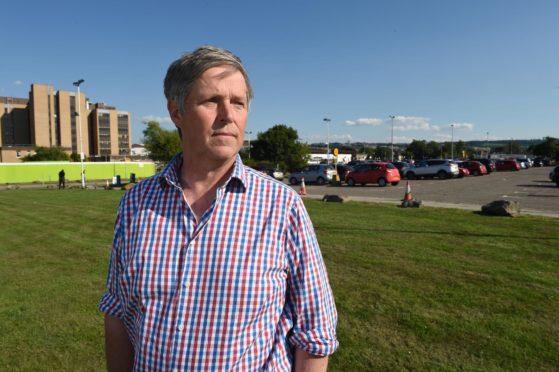A pilot project to combat loneliness amongst elderly people at home in the Highlands is being launched following the Time to Talk campaign championed by the P&J.
The aim of the ‘Time to Talk’ campaign, launched last year by MSP Edward Mountain and the P&J, is to have carers being able to spend more time in the home talking to patients.
NHS Highland has now revealed that they will launch a Time to Talk pilot scheme in Nairn with a view to rolling it out, if successful, across the north Highlands.
It changes the traditional model, that concentrated on physical tasks being completed, and looks at wellbeing and quality time.
Mr Mountain welcomed the move, saying: “The Nairn pilot is huge step forward towards a more personable and person-centred model of care.
“This should hopefully help carers to have more time to talk with those they look after, therefore reducing their isolation and loneliness – which has been exacerbated by the pandemic.”
At its launch, the Time to Talk campaign won the support of two of the region’s largest care providers, Highland Home Carers Ltd and Home Care Scotland.
NHS Highland chief executive Pam Dudek has now confirmed a plan to press forward with a Time to Talk pilot project.
She said: “NHS Highland has been actively exploring the opportunity to change the way that we commission care at home provision. This has been welcomed by providers.
“Currently providers are commissioned on the needs of the individual being supported.
“An alternative approach under consideration is to move to a commitment to commission a volume of capacity from each provider.
“This would form the basis for achieving flexible, reactive, sustainable and affordable capacity whilst giving the provider the confidence to invest in developing capacity.
“Taking this approach, each provider would hold a set number of individuals which will give the provider the ability to clearly see and plan the deployment of their capacity.
“It would also give the provider security in terms of financial remuneration to assist with building capacity.
“The commitment for each individual would be focused on their outcomes rather than time and task-based hours delivered. This will allow the providers the opportunity to operate in a much more flexible manner.”
She added: “In order to test the effectiveness of these proposed arrangements there will shortly be a test of change taking place in the Nairn area. If successful, our intention is that this model will be rolled out across North Highland.”
Speaking about the Time to Talk pilot, Mr Mountain said: “I am delighted that NHS Highland is now moving ahead with plans to enhance home care provision.
“Home care providers want to see this change happen and I look forward to receiving further details on the rollout of the pilot in Nairn.
“It is vital that enhancing care at home provision within NHS Highland is regarded as a priority.”
The “Time to Talk” pilot aims to change how NHS Highland commissions social care packages amid concern that the current arrangement can involve little more than a 20-minute daily visit from a carer.
It was launched at a time when the Covid-19 pandemic is exacerbating the problem of social isolation.
Mr Mountain, who represents the Highlands and islands, wants to extend care beyond meeting purely physical needs to include wellbeing – hence the Time to Talk pilot.
That would involve changing the system from the long-standing “time and task” model, whereby social care at home is commissioned on an hourly rate.
Under that system, services are delivered in short time slots – typically 20 minutes, which mean carers have to prioritise physical care tasks with little time to talk to the elderly or explore their mental wellbeing.
The Time to Talk model, starting with the pilot, would change that dramatically.
